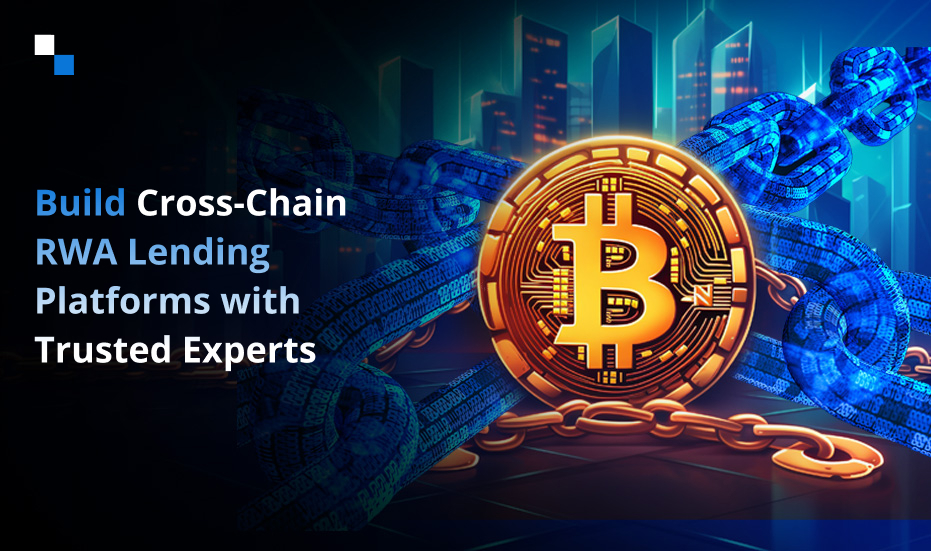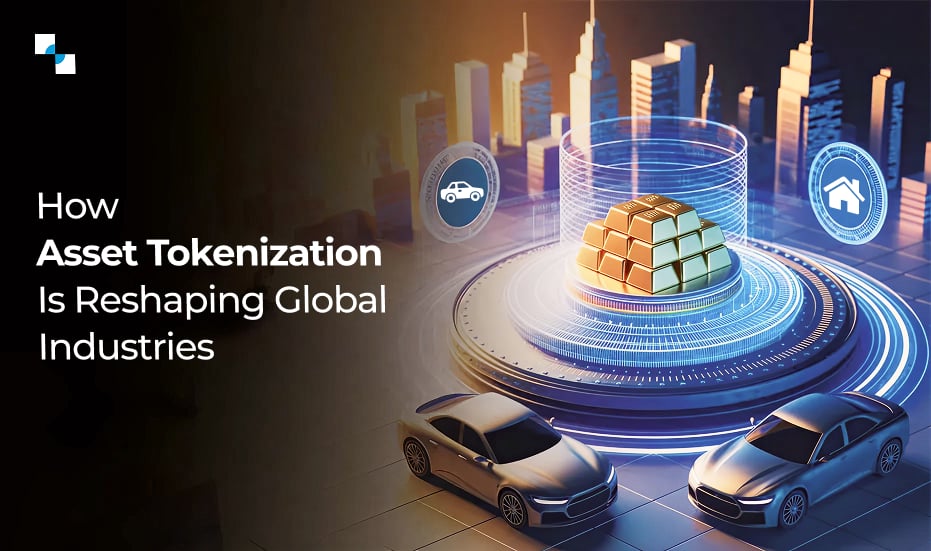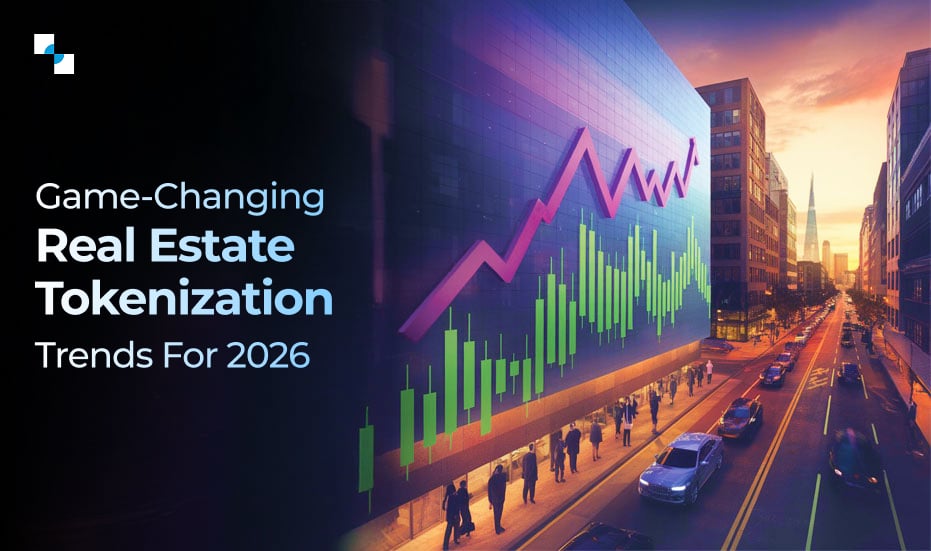RWA lending protocols are rapidly gaining attention in the global financial market. Their ability to connect physical assets with decentralized infrastructure creates a more transparent, inclusive finance.
By 2030, tokenized RWAs could reach a total value of $16 trillion. At the same time, the private credit market, currently estimated at $5.6 trillion, will remove long-standing inefficiencies around access, settlement, and transparency.
Yet, despite progress, today’s deFi ecosystem remains fragmented. Most lending protocols operate only on a single blockchain. This creates barriers: it limits liquidity, restricts user participation, and slows adoption. Cross-chain RWA protocols aim to address this by allowing tokenized assets to move freely across networks, unlocking the potential for truly global tokenized lending markets.
This article looks at how companies can leverage cross-chain RWA lending protocols to create powerful new lending platforms, the benefits they offer, and why now is the ideal time to get started.
Yet, despite progress, today’s deFi ecosystem remains fragmented. Most lending protocols operate only on a single blockchain. This creates barriers: it limits liquidity, restricts user participation, and slows adoption. Cross-chain RWA protocols aim to address this by allowing tokenized assets to move freely across networks, unlocking the potential for truly global tokenized lending markets.
This article looks at how companies can leverage cross-chain RWA lending protocols to create powerful new lending platforms, the benefits they offer, and why now is the ideal time to get started.

Key Benefits of Building a Tokenized RWA Lending Platform
Organizations exploring real-world asset tokenization often discover that the biggest advantages go beyond technology—they’re about access, trust, and growth. Let’s take a closer look at what such a platform makes possible:
1. Broader Access to Credit
Tokenized lending can open financial doors for underserved communities and businesses. Instead of relying on traditional credit scoring or long bank approvals, borrowers can use tokenized assets and blockchain data to demonstrate their creditworthiness. This is especially important in regions where conventional finance is hard to reach.
2. Speed and Cost Efficiency
In traditional lending, applications can take weeks. Multiple intermediaries, manual verification, and paperwork make the process slow and expensive. With smart contracts, loan approvals, disbursements, and repayments are automated, cutting costs and reducing turnaround times from days to minutes.
3. Global Liquidity via Cross-Chain Access
Cross-chain protocols remove the limitations of a single blockchain and enable a lending platform to tap into liquidity across multiple ecosystems. This increases funding options for borrowers while helping lenders diversify their exposure.
4. Fractional Investment Opportunities
Tokenization allows real-world assets to be divided into smaller, tradable units. A property, a loan, or an invoice can be broken down into tokens that investors can buy in fractions. This makes investing more accessible to a wider range of participants with minimal risks.
5. On-Chain Transparency and Reliability
Every transaction on a blockchain is immutable and time stamped. This builds a level of transparency that traditional finance often lacks. Borrowers and lenders can trust that terms will be enforced without relying on intermediaries, and disputes are less likely when all actions are publicly verifiable.
6. Regulatory Readiness
Many modern lending platforms are being designed with compliance in mind from the ground up. Through KYC/AML integrations and identity verification tools, these platforms can meet global regulatory standards while remaining user-friendly and privacy conscious.
Understanding the Challenge: Liquidity Fragmentation
One of the pressing challenges in DeFi today is liquidity fragmentation. Each blockchain—whether Ethereum, Solana, or BNB Chain—tends to operate in isolation. That means a lending pool on one chain can’t easily interact with borrowers on another. This results in lower capital efficiency and inconsistent user experiences.
Cross-chain RWA lending protocols are designed to bridge this gap. By enabling the movement of tokenized assets like real estate, invoices, or government bonds between networks, they allow platforms to create unified lending markets that span multiple chains.
Examples of Protocols Making This Possible
By combining tools like these, lending platforms can offer:
- Multi-chain asset support
- Real-time borrower-lender matching globally
- Integrated compliance and identity verification features
Use Cases: Real Platforms, Real Impact
Here are a few platforms leading the charge:
1. Maple Finance
- Facilitated over $2 billion in loans
- Specializes in corporate credit for fintech and crypto-native firms
- Offers on-chain fixed income opportunities for institutional lenders
2. Centrifuge
- Issued more than $300 million in loans
- Provides liquidity to SMEs through tokenized invoice financing
- Integrates with traditional ERP systems to bridge off-chain operations
Goldfinch
- Deployed over $100 million in unsecured loans
- Focuses on emerging markets such as Latin America and Africa
- Uses community-driven credit scoring instead of traditional collateral
These case studies show that RWA lending platforms can scale, serve real borrowers, and generate tangible returns.
Building Tokenized Lending Platform: Technical Aspects
Creating a secure and scalable platform requires thoughtful architecture. Here are the core components that make up a high-performing RWA lending protocol:
A. Smart Contracts
Smart contracts control the core logic—loan issuance, repayments, interest calculation, and collateral enforcement. Drawing inspiration from systems like MakerDAO, platforms can automate complex lending processes while maintaining trust.
B. Cross-Chain Bridges
Cross-chain bridges enable the tokenized assets to move freely across chains. These technologies allow data and assets to travel between networks seamlessly.
C. Identity Verification and Compliance
Compliance remains critical. Integrating Polygon ID, Fractal ID, or similar tools helps meet KYC and AML standards. With zero-knowledge proofs, users can verify their identity without exposing personal details on-chain.
D. User Experience and Fiat Integration
A user-friendly interface is vital for adoption. Platforms should offer fiat onramps, multi-language support, responsive dashboards, and simple onboarding, especially to target users unfamiliar with DeFi.
Steps to Build a Cross-Chain RWA Lending Platform
For teams exploring this space, a clear roadmap helps streamline execution:
1. Define the Target Market
Are you serving institutions, small businesses, or retail borrowers in underserved regions? Clarity here shapes your platform’s design and positioning.
2. Choose the Right Tech Stack
Select scalable chains (e.g., Ethereum, Polygon), cross-chain infrastructure (e.g., Chainlink CCIP, Wormhole), and smart contract frameworks for automation.
3. Integrate Compliance from the Start
Tools like Fireblocks (custody), Chainalysis (transaction monitoring), and KYCAID (identity checks) help ensure regulatory alignment.
4. Develop a Go-to-Market Strategy
Engage liquidity providers, educate users, and build partnerships with DeFi communities and institutional players. Communication and transparency are key.

Take Away
The future of RWA Lending Platforms will be fast, secure, and global, driven by the tokenization of real-world assets and enabled by cross-chain technologies. Financial institutions, blockchain developers, and fintech innovators have a unique opportunity to unlock limitless potential by building a cross-chain RWA lending platform. With the right tools and a forward-looking mindset, the next generation of global lending can be more inclusive, efficient, and transparent than anything we’ve seen before.
Get in Touch
If your company is exploring the potential of this space, now is the time to take action. Whether you’re a fintech firm aiming to upgrade your lending infrastructure, a blockchain development team looking for your next big project, or an investor interested in scalable RWA platforms, Antier is here to help. Let’s connect and explore how a custom-built cross-chain RWA lending platform can align with your business goals and drive real growth.








